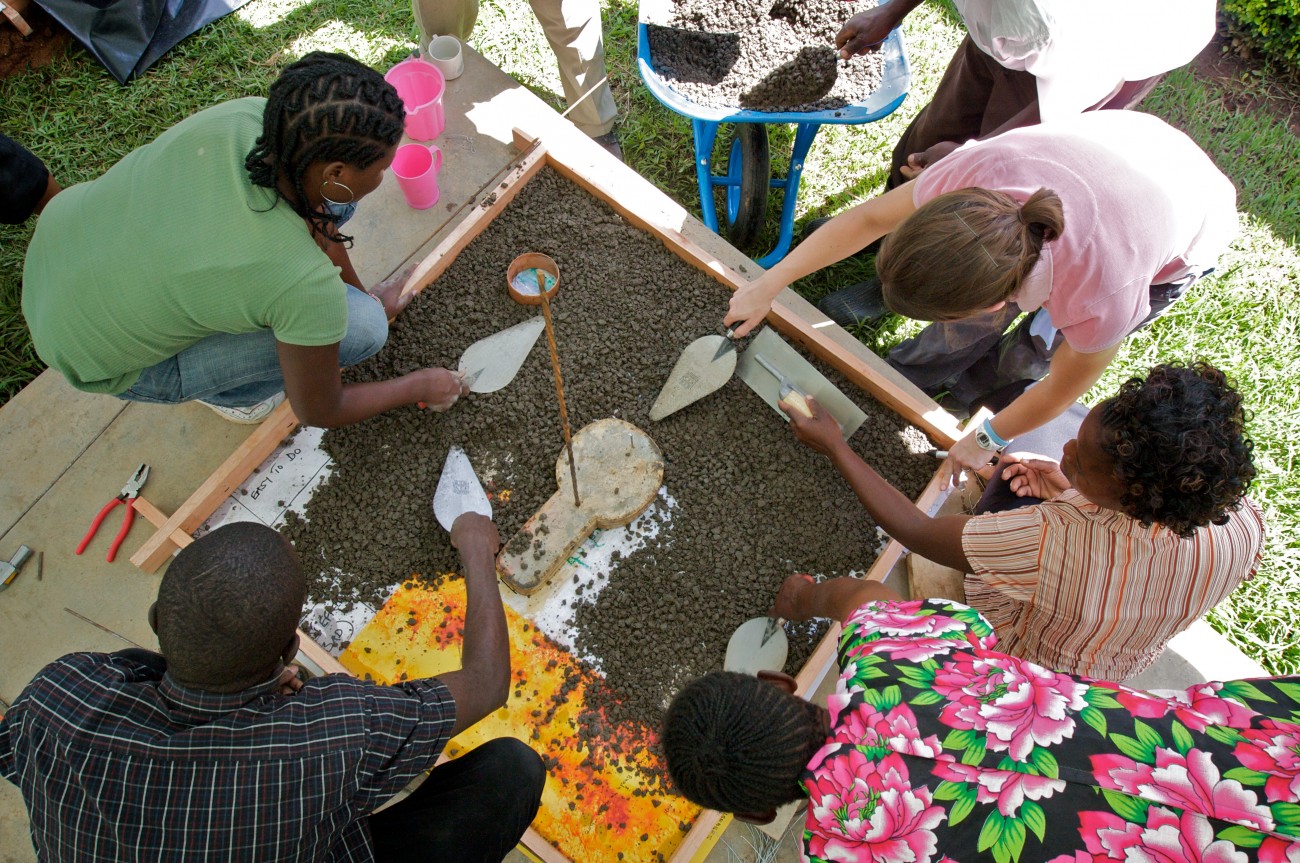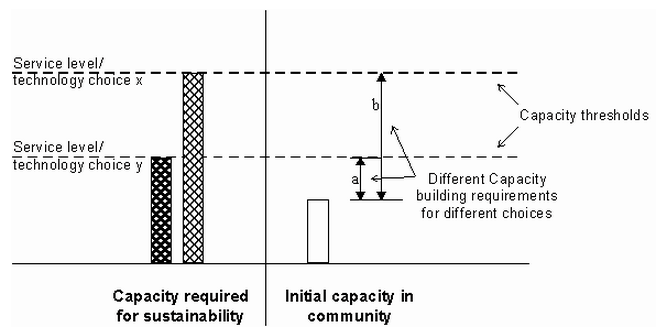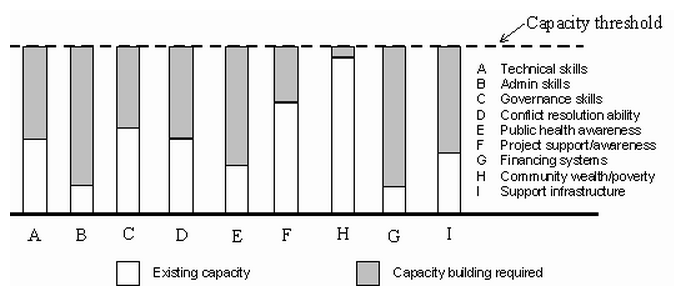Difference between revisions of "Capacity Building - Threshold Concept"
(→Acknowledgements) |
|||
| Line 32: | Line 32: | ||
=== Operation and maintenance capacity === | === Operation and maintenance capacity === | ||
<div>Operation and maintenance has generally, up until now, been seen largely from a technical perspective. It is suggested, however, that any failure of a system is ultimately the result of institutional and economic factors and not technical factors. Any system will need maintenance and will break down physically from time to time but sustained failure of a system results from inadequate finance, poor administration, lack of community support illustrated through the lack of payment for services, lack of adequately trained technical staff etc.. will cause the failure of the scheme although the physical symptom may be a failed pump or some other physical failure.</div><div><br/></div><div>If one area of capacity falls below the threshold there is likely to be a "domino" effect. If the person responsible for administration in a village ceases to function for any reason, before long the collection of revenue will fail. There will not be sufficient funds available to pay the technical staff or to purchase spare parts and physical failure will result causing a decrease in public support and reluctance to pay for poor services etc. It is essential that the capacity of the community remains at the threshold levels during the life-span of the infrastructure. Whilst some attention is paid to the technical aspects of operation and maintenance, there is little emphasis being placed on maintaining institutional capacity. Again the threshold concept is useful in providing a rational basis for the maintenance of institutional capacity.</div></div></div></div></div> | <div>Operation and maintenance has generally, up until now, been seen largely from a technical perspective. It is suggested, however, that any failure of a system is ultimately the result of institutional and economic factors and not technical factors. Any system will need maintenance and will break down physically from time to time but sustained failure of a system results from inadequate finance, poor administration, lack of community support illustrated through the lack of payment for services, lack of adequately trained technical staff etc.. will cause the failure of the scheme although the physical symptom may be a failed pump or some other physical failure.</div><div><br/></div><div>If one area of capacity falls below the threshold there is likely to be a "domino" effect. If the person responsible for administration in a village ceases to function for any reason, before long the collection of revenue will fail. There will not be sufficient funds available to pay the technical staff or to purchase spare parts and physical failure will result causing a decrease in public support and reluctance to pay for poor services etc. It is essential that the capacity of the community remains at the threshold levels during the life-span of the infrastructure. Whilst some attention is paid to the technical aspects of operation and maintenance, there is little emphasis being placed on maintaining institutional capacity. Again the threshold concept is useful in providing a rational basis for the maintenance of institutional capacity.</div></div></div></div></div> | ||
| + | <br> | ||
| + | |||
| + | ===Field experiences=== | ||
| + | The following project(s) make use of capacity building. | ||
| + | <br> | ||
| + | {|style="border: 2px solid #e0e0e0; width: 20%; text-align: justify; background-color: #e9f5fd;" cellpadding="2" | ||
| + | <!--rsr logo here--> | ||
| + | |- style="vertical-align: top" | ||
| + | |[[Image:akvorsr logo_lite.png|center|60px|link=http://akvo.org/products/rsr/]] | ||
| + | <!--project blocks here--> | ||
| + | |- style="vertical-align: bottom" | ||
| + | |[[Image:project 367.png |thumb|center|140px|<font size="2"><center>[http://rsr.akvo.org//project/367/ RSR Project 367]<br>SWASH in Birendranagar, Surkhet</center></font>|link=http://rsr.akvo.org//project/367/ ]] | ||
| + | |} | ||
| + | |||
<br> | <br> | ||
=== Acknowledgements === | === Acknowledgements === | ||
Revision as of 22:35, 12 March 2014
Capacity building includes a broad definition as a holistic enterprise, encompassing a multitude of activities. It means building abilities, relationships and values that will enable organisations, groups and individuals to improve their performance and achieve their development objectives. It includes strengthening the processes, systems and rules that influence collective and individual behaviour and performance in all development endeavours. It means enhancing people’s technical ability and willingness to play new developmental roles and adapt to new demands and situations. Capacity building is not only constrained to officials and technicians but must also include the general awareness of the local population regarding their services and development in general.- Human resource development: enhancing knowledge, skills and capacities of individuals in technical, personal and managerial areas.
- Organisational development: improving organisational performance, management, systems and governance in order to build effective, efficient and accountable institutions.
- Institutional development: strengthening interrelationships between stakeholders, strengthening cooperation and coordination, clarifying tasks, roles and terms of interaction.
- Economic factors and support infrastructure: Revenue flow to cover the recurring cost of maintenance, operating expenses, salaries and the repayment of loans if applicable. Support infrastructure consisting of such things as office accommodation, transport, communications, electricity, or copying facilities.
The capacity required for sustainability is determined not only by the level of service chosen by the community but more importantly by the technology choice made to provide that level of service. For example, if a community chooses a household connection level of service this could be achieved through a number of alternative technology options. The service could be provided by developing boreholes or by the construction of a gravity fed system or through purchasing water from a regional scheme. Each of these technology options would provide the same level of service to the community but each would require different skills and "capacities" in the community or local government.
Capacity thresholds
Applying the Threshold Concept
During the feasibility phase of a project, a participative evaluation process needs to be undertaken with the community to establish the levels of capacity which exist prior to the project. The service level options and technology choices must be established so as to be able to identify the thresholds which the community must meet in each category in order to ensure sustainability.
Planning and costing capacity building interventions
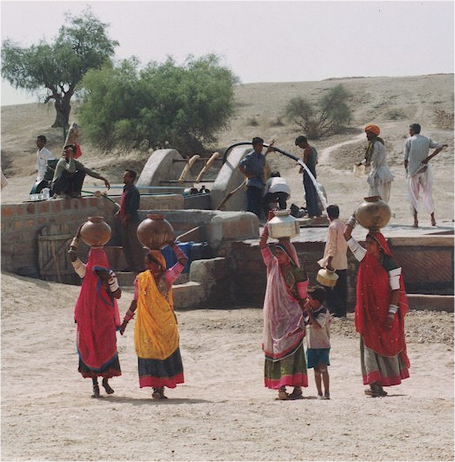
Implementing a capacity building programme
Monitoring and evaluation
Operation and maintenance capacity
Field experiences
The following project(s) make use of capacity building.
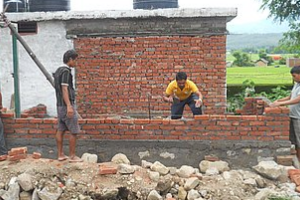 SWASH in Birendranagar, Surkhet |
Acknowledgements
- Len Abrams. Capacity Building for water supply and sanitation development at local level. A paper delivered at the 2nd UNDP Symposium on Water Sector Capacity Building, Delft, Netherlands. The African Water Page.
- Donald Kaniaru, Xia Kunbao; Strike Mkandla; Levis Kavagi, Capacity Building for Sustainable Development: An overview of UNEP environmental capacity development initiatives. UNEP Division of Environmental Policy Implementation. December 2002.
- FIETS sustainability approach. Dutch WASH Alliance.
